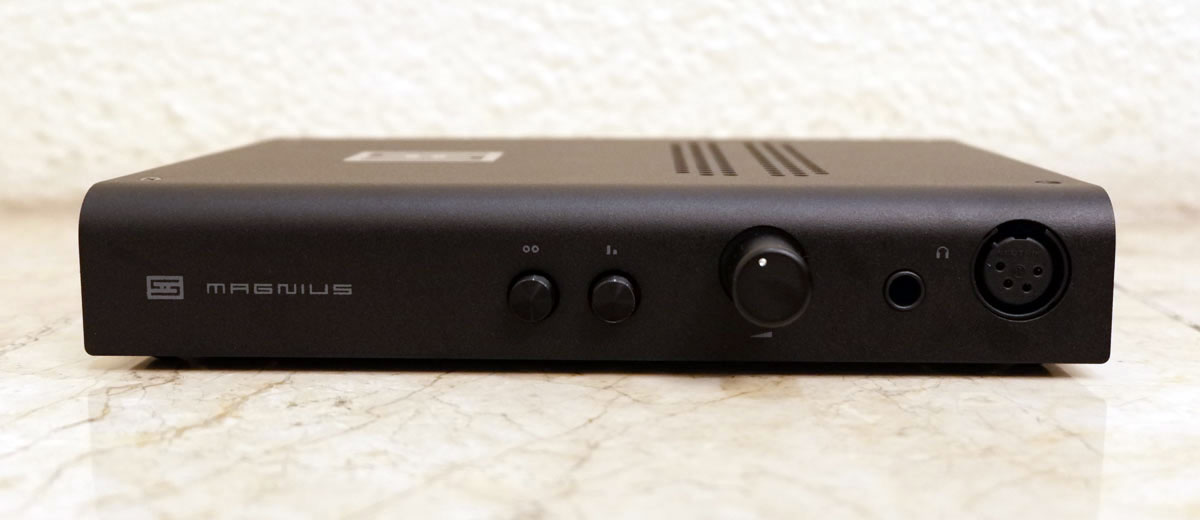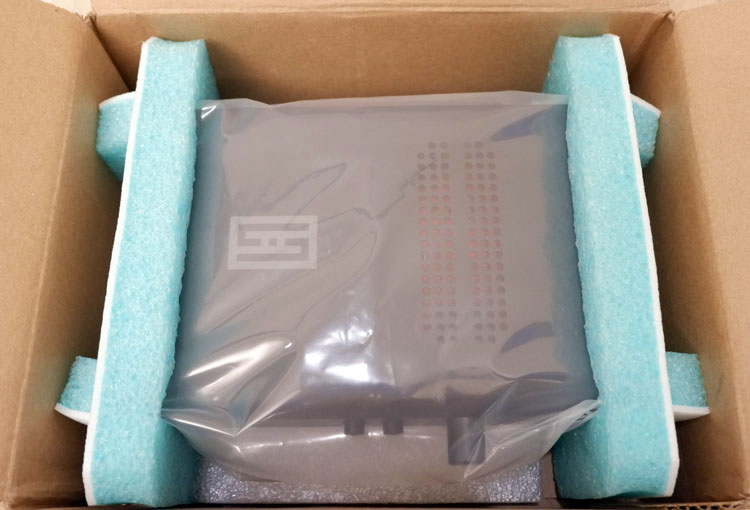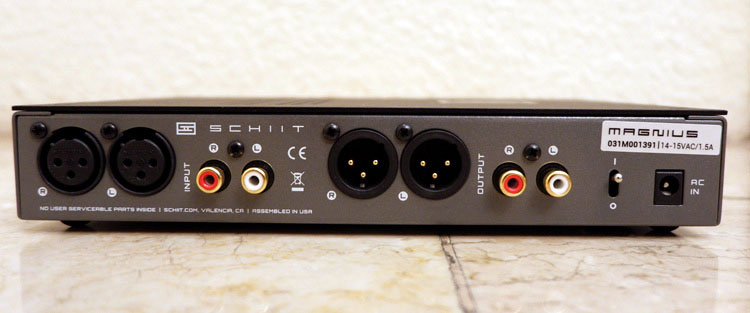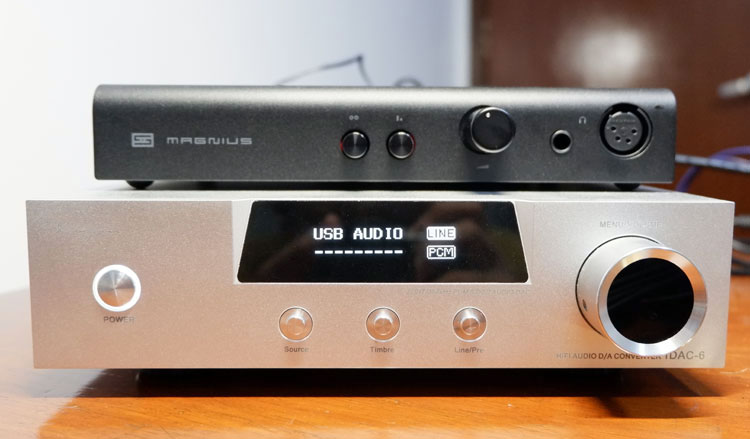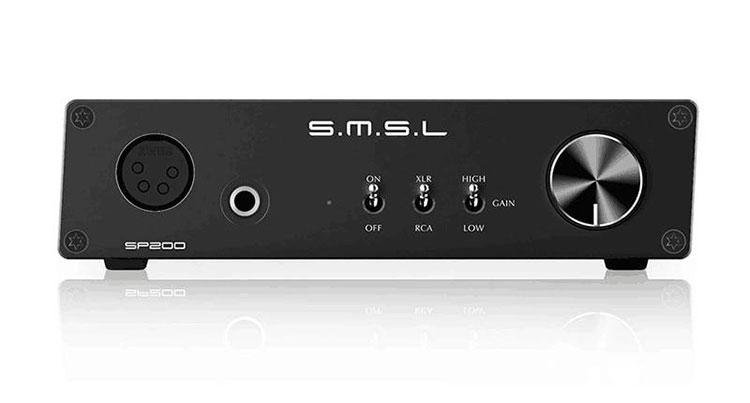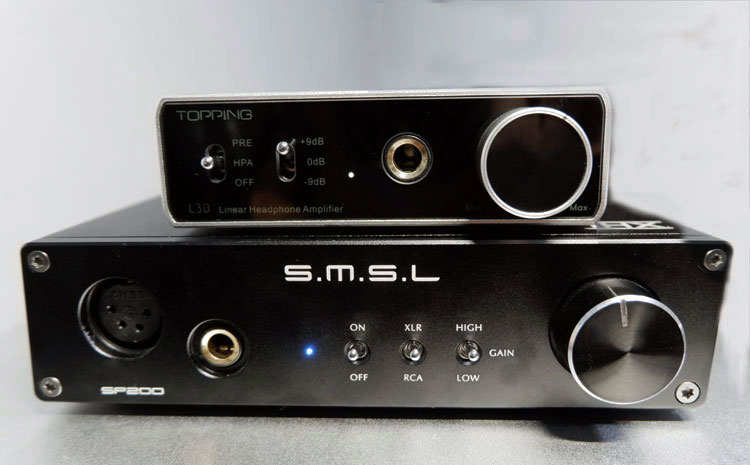The Schiit Audio Magnius is an affordable balanced headphone amplifier and preamplifier offering up to 6.0W RMS per channel. It is priced at $199.
Disclaimer: The Schiit Audio Magnius sent to us is a direct purchase from their website. We thank the team at Schiit Audio for shipping it safely and quickly.
To read more about Schiit Audio products we have featured on Headfonics click here.
Note, this review follows our new scoring guidelines for 2020 which you can read up on here.
Schiit is a company that has been making its rounds in the audiophile community since 2010 when it launched the original Asgard. Since then, they have launched numerous amplifiers and DACs with prices ranging from $99 to $2499.
Traditionally, Schiit amplifiers are designed and assembled exclusively with discrete components. Last year, Schiit launched their latest Schiit Magni 3+ together with their Schiit Magni Heresy.
It was called Heresy because it goes against the principles with which Schiit has been building their amplifiers. The Magni Heresy was created to measure very well, and Schiit was able to achieve by using op-amps, instead of discrete components.
With a similar design concept as the Magni Heresy, Schiit launched a fully balanced version of the amplifier. It’s capable of 6W @ 16Ω on balanced, and they called it the Magnius, a shortened form of Magnius Maximus.

Features
The Magnius was designed to stack perfectly with their recently released Modius dual AK4493 based DAC, and at a relatively friendly price tag of just $199, it makes me curious if it sounds as good as advertised.
The circuitry inside is made with high-quality components from their feedforward buffers, differential voltage gain, and current-feedback output stages, they were all sourced Texas Instruments a reputable source of transistors, and op-amps.
Schiit has also decided to use a 27mm Alps potentiometer on the Magnius, instead of the more common 9mm potentiometers that are found in most headphone amplifiers at this price point or higher. This larger potentiometer gives the Magnius better tracking between the left and right channel, and better precision control of the volume.
Aside from the internal components, Schiit also decided to make sure that the connections to and from the Magnius will be secure, as they decided to use Neutrik connectors on all the connection points of the Magnius.
With the op-amp based topologies of the Magnius, I’m inclined to think that this would be directly competing with the currently popular THX AAA amplifiers from Monoprice, Drop, and SMSL, as well as Topping’s NFCA based headphone amplifiers. With a noticeably lower price point than its competition, I’m interested to hear how it competes with the current industry frontrunners for under $500.
Packaging
This is the first time that I got a product directly from Schiit, and I can say that they are not letting any money go towards anything but the practical things.
The package that the Magnius came in was spartan! I thought that Topping’s standard packing box was simple, but Schiit was able to spend even less on the box, as their box is already the shipping box, where Topping still had put their white box inside a shipping box.
I’m not saying that Schiit doesn’t want to protect their product when it’s on its way to you, in fact, they do. When I opened the box, I found that there is a thick foam that secures the amplifier, as well as the wall wart. Although there was nothing else inside, I’m satisfied to know that the item was sent to me properly protected from all the drops and falls expected when shipping any product.
I’m just glad that the packaging is able to serve its purpose, and Schiit doesn’t want to spend an extra cent beyond just serving that purpose.
Design
The Magnius came with a 15V AC power supply, and I’m glad that Schiit continues to utilize AC transformers instead of Switch Mode Power Supplies. This gives me assurance that the circuit inside the amplifier is receiving clean power, reducing noise both from the power system and generated from the switch mode transistors.
Unlike most of Schiit’s offering, the Magnius only comes in black, not that I’m complaining. It’s a tasteful kind of black though, and I love how the top of the chassis is powder coated with a matte black finish for a durable and even finish.
I’m sure it would pair well with the Modius as it can come in black as well. I’m guessing that the Magnius comes exclusively in black since the Magni Heresy comes in black only? Maybe.
I/O
Front Panel
In front of the Magnius, there are 2 buttons, the input selector as well as the gain switch. The switches are very tactile and indicate their current state well.
Next to the toggle switches is the volume potentiometer, which I mentioned to be a special 27mm potentiometer not normally found in units at this price point. There’s also a nice white dot that would indicate the volume level. It turns quite smoothly, while there is a reasonable amount of resistance that would prevent any accidental volume adjustments, and it also gives me more precise control of the volume.
On the far left of the front are the 2 headphone outs, a ¼” single-ended output that’s rated for 2.0W at 32Ω, and a 4-pin balanced XLR output on the far left rated for 5.0W at 32Ω. These power ratings will be enough for a wide variety of headphones.
Power
Strikingly absent was a power light indicator. When I 1st turned the Magnius on, I had my SP200 stacked on top of it, and I couldn’t really find where the power indicator was.
There was a sound coming out of the headphones that I plugged in, but there wasn’t a visual indication of the unit being on. It was only when I removed the SP200 when I found a glowing red light inside the chassis that serves as the power indicator. I would have wanted something in front as the power LED though, as I mostly listen in a properly lit room.
The power switch of the Magnius is located at the back of the unit, and I’ve met quite a few people who complain about this, as it would have been more convenient if the power switch was mounted in front.
Rear Panel
At the back of the Magnius are 2 pairs of inputs, a single-ended RCA input, and a balanced pair of 3-pin XLR inputs, which can be selected by the input selector in front. The Magnius also features 2 pairs of pre-amp outputs, a single-ended RCA, as well as a balanced pair of 3-pin XLR outputs, both always active regardless of a pair of headphones being plugged in or not.
Power Output
When talking about raw power, the Magnius really has heaps of it. Using the single-ended output, I’m not able to go beyond 11 o’clock on my Hifiman Anandas. On balanced, the most that I was able to bear with my Sennheiser HD600’s was just at 12 o’clock.
With this amount of headroom, I’m sure that the Magnius will be able to power more demanding headphones, especially with the power that it can push out through its balanced outputs.
Magnius Sound Impressions
Tonality
It’s flat! I believe that the Magnius was designed to directly compete with the likes of the THX AAA amps, and I can hear that the Magnius sounds similarly neutral.
The frequency response of the Magnius is an overall neutral sound signature. While remaining neutral though, the Magnius has proven to me that being neutral doesn’t automatically equate to being sterile.
Details and Texturization
Tonality is one thing, and I’ve seen many cheaper amplifiers achieve the same level of neutrality. However, one of the things that brings an amplifier to the next level is how the details are presented by the amplifier.
With the Magnius, I found that the details are very well presented, and the Magnius is able to take full control of the drivers. With faster-paced music, the Magnius was able to present each detail as crisp, and distinct. I’m satisfied with how each drum beat and cymbal hit is presented as distinct from each other even in faster songs.
Staging
Instrument separation is also a strong point with the Magnius, as it’s able to present the timbre of each instrument. Even when 2 instruments are playing the same note on certain passages, the Magnius will be able to present a distinction between the 2 instruments through a detailed pair of headphones.
One thing that I would have wanted more of with the Magnius though is the way it presents soundstage. I would have hoped that it could have presented a slightly wider sound stage. Soundstage felt slightly narrow on the sides of my head while extending a bit farther forward towards the center.
Despite the slightly narrower soundstage that the Magnius tends to project, it is able to create a very tangible image. When I play songs from Amber Rubarth’s Songs from the 17th ward, I can almost feel the guitars right in front of me.
I had to double-check if my laptop wasn’t playing any of the music because it felt like the music was coming from my laptop instead of my headphone, that’s the kind of tangible image that the Magnius is able to project.
Synergy
For the most part, I ran the Magnius off the original Cayin iDAC-6 hybrid tube DAC, running dual AK4490 DAC chips. With this DAC, the Magnius is transparent enough to be able to show me the dynamic characteristics of the DAC.
I can hear the warmth on tube mode, and the more resolving character of transistor mode when I choose it on the DAC. The Magnius was transparent enough, that it could let me discern what the DAC upstream sounds like.
Sennheiser HD600
I decided to listen on the Magnius with my go-to dynamic driver headphone, the Sennheiser HD600. I plugged the HD600 on the balanced connector, and the Magnius fed it a lot of power and was at a comfortable listening level at around 11 o’clock on high gain.
The HD600 tends to be rolled off at the frequency extremes, and the Magnius didn’t color the sound in any way to augment the shortcomings of the headphones.
However, I found that the Magnius was able to control the drivers on the HD600 well. The mid-bass region on the HD600 with the Magnius was really well defined, and impactful. The legendary midrange of the HD600 was also slightly enhanced with more details coming from the Magnius, something I didn’t imagine to be possible before I heard it.
Hifiman Ananda
The Ananda was plugged into the single-ended ¼” output of the Magnius, and there was more than enough power to drive the Anandas well, as I never went beyond 12 o’clock at high gain.
With the Hifiman Ananda, the Magnius was also able to retain the natural frequency response of the Ananda. I can hear that the Magnius is transparent, and whatever headphone is plugged into it, the amplifier can retain the natural frequency response of the headphone.
I also found the Magnius having a great amount of control over the planar drivers of the Ananda, which proves that the Magnius can have great control over any headphone driver, whether it’s dynamic or planar. I find that the Ananda’s sound stage to be wider, at least compared to my HD600.
Unfortunately, the Magnius slightly compressed it, maybe because of the smoother treble region, which might slightly reduce the air frequencies.
My experience of powering the Anandas off the Magnius is quite good though. I found the Ananda’s ability to resolve details and to have a dynamic punch being further enhanced.
Select Comparisons
S.M.S.L SP200 THX AAA 888
Technical
The form factor of the 2 amplifiers are quite different. Despite the more diminutive size of the SP200, the SP200 crammed everything inside its chassis, including the tiny transformer, as well as the rest of the amplifier’s circuits, while Schiit decided on using an off-board transformer inside the Magnius’ heavy wall wart.
With a bit more real estate inside the chassis, the Magnius was able to add some pre-amp outs which are glaringly absent on the SP200.
While switches on both amplifiers are practically the same, as they both have input selectors and a 2 level gain switch. However, the Magnius’ power switch is mounted on the back, a minor inconvenience compared to the front-mounted one found on the SP200.
Both amplifiers are rated at 6W at 16Ω, so it’s no surprise to me that both amplifiers are at the same volume knob positions when being volume matched for the same headphone. I think both amplifiers will be able to push the same headphones to the same comfortable listening level.
Tuning
With both amplifiers aiming to be neutral, I think both of them achieved almost the same result when it comes to the flatness of the frequency response. Both amplifiers don’t overly emphasize any particular frequency range.
With the Magnius at $199, and the SP200 hovering at around $250, they’re priced fairly close. I find that choosing one over the other would boil down to prioritizing certain qualities. The SP200 is a bit more resolving, decidedly more accurate, and has a slightly wider soundstage because of a more sparkly treble region.
The Magnius on the other hand tends to have a punchier, and more dynamic bass presentation, a more smoothed out and refined treble region, while having a comparatively narrower soundstage.
Topping L30
At first, it would seem unfair to compare a $139 single-ended amplifier to a $199 balanced amplifier. At half the size, the L30 gives 3.5W at 16Ω, while the Magnius has an output of 6.0W at 16Ω.
Power differential aside though, the 2 amplifiers sound quite similar.
They’re both neutral, and they both have a smooth treble region and produce dynamic bass and smooth midrange. However, when the L30 starts to trip over its own feet when the pace starts to become faster, the Magnius can keep its composure and be able to distinctly resolve each drum beat and cymbal hit.
When I heard both amplifiers, I found that the sound signatures are quite close, it’s just that the Magnius is a more mature version of the L30, pushing more power, and keeping its composure when the L30 can no longer do so.
Our Verdict
Schiit is known for providing quality products at reasonable prices, and they have not failed in doing so with the Magnius. They have managed to create an op-amp-based balanced amplifier that has lots of power, with a fast and detailed presentation, while remaining fairly neutral.
Despite being neutral, the Magnius manages to have a dynamic low end, texturized midrange, and a smooth and detailed treble. I wish they just moved the power switch to the front though, but that might be asking for too much from Schiit.
Schiit Audio Magnius Specifications
Balanced Headphone Output
-
Maximum Power, 16 ohms: 6.0W RMS per channel
-
Maximum Power, 32 ohms: 5.0W RMS per channel
-
Maximum Power, 50 ohms: 3.2W RMS per channel
-
Maximum Power, 300 ohms: 1000mW RMS per channel
-
Maximum Power, 600 ohms: 500mW RMS per channel
Single-Ended Headphone Output
-
Maximum Power, 16 ohms: 2.2W RMS per channel
-
Maximum Power, 32 ohms: 2.0W RMS per channel
-
Maximum Power, 50 ohms: 1.3W RMS per channel
-
Maximum Power, 300 ohms: 300mW RMS per channel
-
Maximum Power, 600 ohms: 150mW RMS per channel
- Note: Maximum power rated at 1% THD, high gain
THD+N
-
Low Gain, Balanced Output: Less than 0.0001% (-119dB) at 4V RMS into 32 ohms
-
High Gain, Balanced Output: Less than 0.0003% (-110dB) at 4V RMS into 32 ohms
-
Low Gain, SE Output: Less than 0.003% (-90dB) at 1V RMS into 32 ohms
-
High Gain, SE Output: Less than 0.004% (-87db) at 2V RMS into 32 ohms
IMD
-
Low Gain, Balanced Output: Less than -112dB at 4V RMS into 32 ohms, CCIF
-
High Gain, Balanced Output: Less than -110dB at 4V RMS into 32 ohms, CCIF
-
Low Gain, SE Output: Less than -73dB at 1V RMS into 32 ohms, CCIF
-
High Gain, SE Output: Less than -72dB at 2V RMS into 32 ohms, CCIF
SNR
-
Low Gain, Balanced Output: Greater than 125dB, unweighted, referenced to 4V RMS
-
High Gain, Balanced Output: Greater than 115dB, unweighted, referenced to 4V RMS
-
Low Gain, SE Output: Greater than 105dB, unweighted, referenced to 1V RMS
-
High Gain, SE Output: Greater than 110dB, unweighted, referenced to 2V RMS
Crosstalk
-
Less than -90dB, 20 Hz-20 kHz, either gain, 300-ohm load
-
Less than -70dB, 20 Hz-20 kHz, either gain, 32-ohm load
-
Output Impedance: Less than 0.1 ohms at either gain
-
Input Impedance: 50k ohms
Gain
-
Balanced Output: 1 (0db) or 5 (14db)
-
Single-ended Output: 0.5 (-6dB) or 2.5 (8db)
-
Topology: Composite amplifier with OPA1688 input buffers, LME49724 differential amplifier, TPA6120A2 current feedback output stage, DC coupled.
-
Protection: Standard failsafe DC power input and muting relay
-
Power Supply: “Wall wart” style 24VA 15VAC transformer, linear regulated +/- 13.5V rails with over 6,000uF filter capacitance
-
Power Consumption: 6W idle, 21W max
-
Size: 9 x 6 x 1.5”

